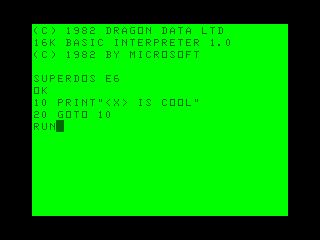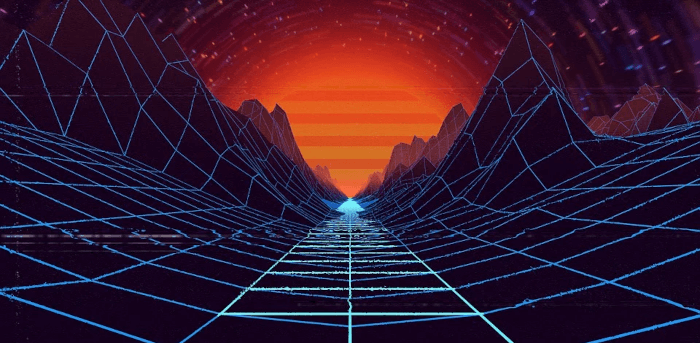Last Updated on April 22, 2022
Emulation is the practice of using a program (called an emulator) on a PC to mimic the behaviour of a home computer or a video game console, in order to play (usually retro) games on a computer.
Home computers were a class of microcomputers that entered the market in 1977 and became common during the 1980s. They were marketed to consumers as affordable and accessible computers that, for the first time, were intended for the use of a single non-technical user.
Back in the 1980s, home computers came to the forefront of teenagers’ minds. Specifically, the Amiga, ZX Spectrum, and Atari ST were extremely popular. They were hugely popular home computers targeted heavily towards games, but they also ran other types of software.
The Dragon 32 and Dragon 64 are home computers based on the Motorola 0.89 MHz 6809E processor and 32 and 64 KB of RAM respectively. The Dragon 32 was made from 1982 to 1984. The Dragons are very similar to the TRS-80 Color Computer (CoCo), and were produced for the European market by Dragon Data, Ltd., in Port Talbot, Wales, and for the US market by Tano of New Orleans, Louisiana.
The machines were not big commercial successes in part because they had flaws both in the home computer market and the educational market. For example, while the Dragon machine sported a full-size keyboard that was tactile, it could only display uppercase characters effectively ruling itself out of the educational market immediately.
Dragon ROMs
The firmware ROM for both the Dragon 32 and Dragon 64 are under copyright. If you own a machine, you can dump your own ROM. If you have difficulty extracting these from your actuals Dragon or CoCo, dumps may be available from the Dragon Archive or the Color Computer Archive. The Dragon Archive has a wealth of useful information and materials.
Dragon 32 BASIC is provided by Microsoft and shares many features found on other home computers of its era.
Dragon Emulators
 Our recommended emulator is XRoar, which can emulate Dragon 32 and Tandy Color modes 1 & 2 computers. It offers a good range of features including support for joysticks, accelerated OpenGL output, support for all video modes, and much more.
Our recommended emulator is XRoar, which can emulate Dragon 32 and Tandy Color modes 1 & 2 computers. It offers a good range of features including support for joysticks, accelerated OpenGL output, support for all video modes, and much more.
Download the latest release of the source code from the project’s website. Extract that file, change into the directory and compile the source code:
$ gzip -dc xroar-0.36.2.tar.gz | tar xvf -
$ cd xroar-0.36.2
$ ./configure
$ make
$ sudo make install
The project also provides an online emulator which you can use from a web browser. XRoar online can emulate all models of Dragon machines (32, 64, Tano Dragon, Dragon 200-E) and models of Tandy’s Color Computer (CoCo). The Tano Dragon is the US version of the Dragon 64.
The best alternative to XRoar is MAME, which also supports a huge range of portable and console gaming systems.
Dragon Software
Initially, the Dragon was reasonably well supported by the large UK software companies. Top-selling games available for the Dragon include Arcadia (Imagine), Chuckie Egg (A&F), Manic Miner and sequel Jet Set Willy (Software Projects), Hunchback (Ocean) and Football Manager (Addictive). Due to the basic graphics modes of the Dragon, converted games had a distinctive appearance, with colour games being usually played on a green or white background (rather than the more common black on other systems) or games with high-definition graphics having to run in monochrome.
We recommend you visit the Dragon Archive as it hosts over 700 files in its software archive.
| Home Computers | |
|---|---|
| Amiga | Family of personal computers introduced by Commodore in 1985 |
| Amstrad CPC | Combined the computer, keyboard and data storage in a single unit |
| Atari ST | A popular line of personal computers from Atari Corporation |
| BBC Micro | Series of computers designed and built by Acorn |
| Commodore 64 | Hugely popular home computer |
| Dragon | Built around the Motorola MC6809E processor running at 0.89 MHz |
| Electron | A microcomputer sported a Synterek SY6502A CPU clocked at 2MHz |
| MSX | A popular range particularly in Japan |
| Oric | The underrated Oric-1 and Oric Atmos |
| QL | Based on a Motorola 68008 CPU clocked at 7.5 MHz with 128KB of RAM |
| TRS-80 | Very early mass-produced and mass-marketed retail home computers |
| VIC-20 | 8-bit home computer that was released in 1980/1 |
| ZX80 | Predecessor to the ZX81; ignited the UK's home computer market |
| ZX81 | Low-cost introduction to home computing notorious for its RAM pack wobble |
| ZX Spectrum | One of the biggest selling home computers |
 Read our complete collection of recommended free and open source software. Our curated compilation covers all categories of software. Read our complete collection of recommended free and open source software. Our curated compilation covers all categories of software. Spotted a useful open source Linux program not covered on our site? Please let us know by completing this form. The software collection forms part of our series of informative articles for Linux enthusiasts. There are hundreds of in-depth reviews, open source alternatives to proprietary software from large corporations like Google, Microsoft, Apple, Adobe, IBM, Cisco, Oracle, and Autodesk. There are also fun things to try, hardware, free programming books and tutorials, and much more. |

I had a Dragon 32 but sold it at a boot sale years ago.